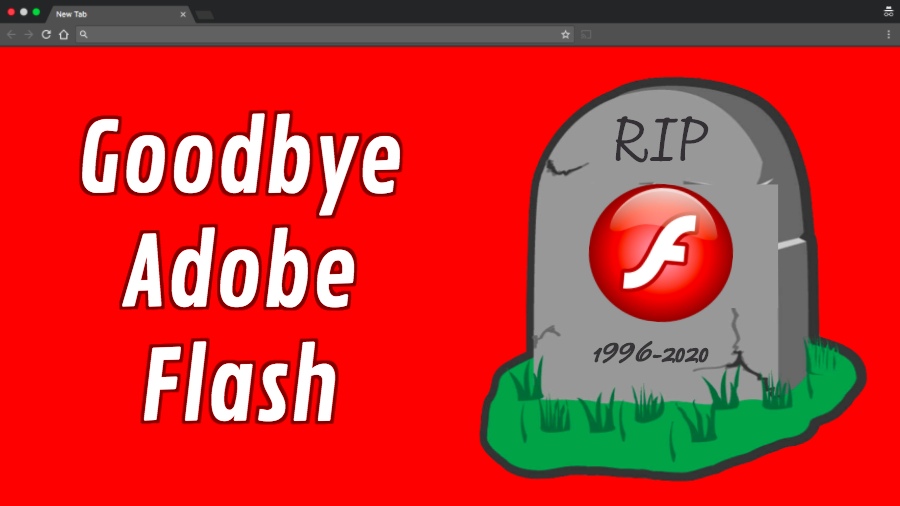Adobe Flash has received the final update before its shutdown at the end of 2020. The stalwart runtime has been instrumental to the growth of the world wide web and the wider internet but as technology has moved on, the Adobe runtime has became bloated and slow compared to today’s standards. It has also been unstable from security point of view with a myriad of security patches getting released for it every month, as more exploits are uncovered.
Adobe Flash has not been supported on mobile devices since 2011 and has been removed from desktop browsers over the past few years, because of an agreement between the big tech companies and Adobe. All, that is, except Apple that has never supported Flash – in fact, the hostility of Steve Job towards it was legendary. For those who don’t remember, Adobe Flash changed everything. The internet during 1990s was one of static pages that was made up of text and the off low-end photo. The Flash player and runtime brought users animation, sound, video, games together that rendered perfectly in the browser without the interference at the surrounding HTML.
It was very clunky and unreliable. But the part in driving forward the look and the progress of our online lives should not be underestimated. Back at the start of the dot.com bubble, companies like Moonfruit offered WYSIWYG websites, built completely in Flash. Moonfruit migrated to HTML5 in 2016 and reflected the direction of travel. The web was much faster than Adobe Flash and had gone from being its enabler to being its milestone. With many instances of Flash content still active and the number of zero-day vulnerabilities going high, it was decided in 2017 that Adobe will have to be phased out slowly instead of being shut off directly. Since that time, browsers have slowly started to restrict access to Flash content. Even Google Chrome, that had skin in the game started the process which has finished.

In a final release note, Adobe stated that they want to thank all their customers and developers who have used and created amazing Flash Player content over the last two decades. They are proud that Flash had a crucial role in evolving web content among animation, interactivity, audio and video. They are excited to help lead the era of digital experiences.
Adobe also confirmed that Flash reaches EoL (lend-of-life) in the last day of 2020. Fron 12th January 2021, it will block the plug-in from running content at the server-side. It has been confirmed that the failure to accept today’s update will not make a difference. The self-destruct payload has been included in the code for months already. Adobe has also suggested that Flash player should be uninstalled from users’ systems. This is also reinforced by strong on-screen warnings in the new release. Keeping it installed will not harm the computer, but it can leave some open security vulnerabilities that have not been discovered yet.
The one exception is for users at China who will receive updates to their localized version of Flash. The company has also confirmed that it will continue to concentrate on contributors to the development of the HTML5 standard and the Adobe AIR platform which is still not affected by the closure. And so goodbye to Adobe Flash. Its time had come and gone – but without it, we wouldn’t have been where we are today.

